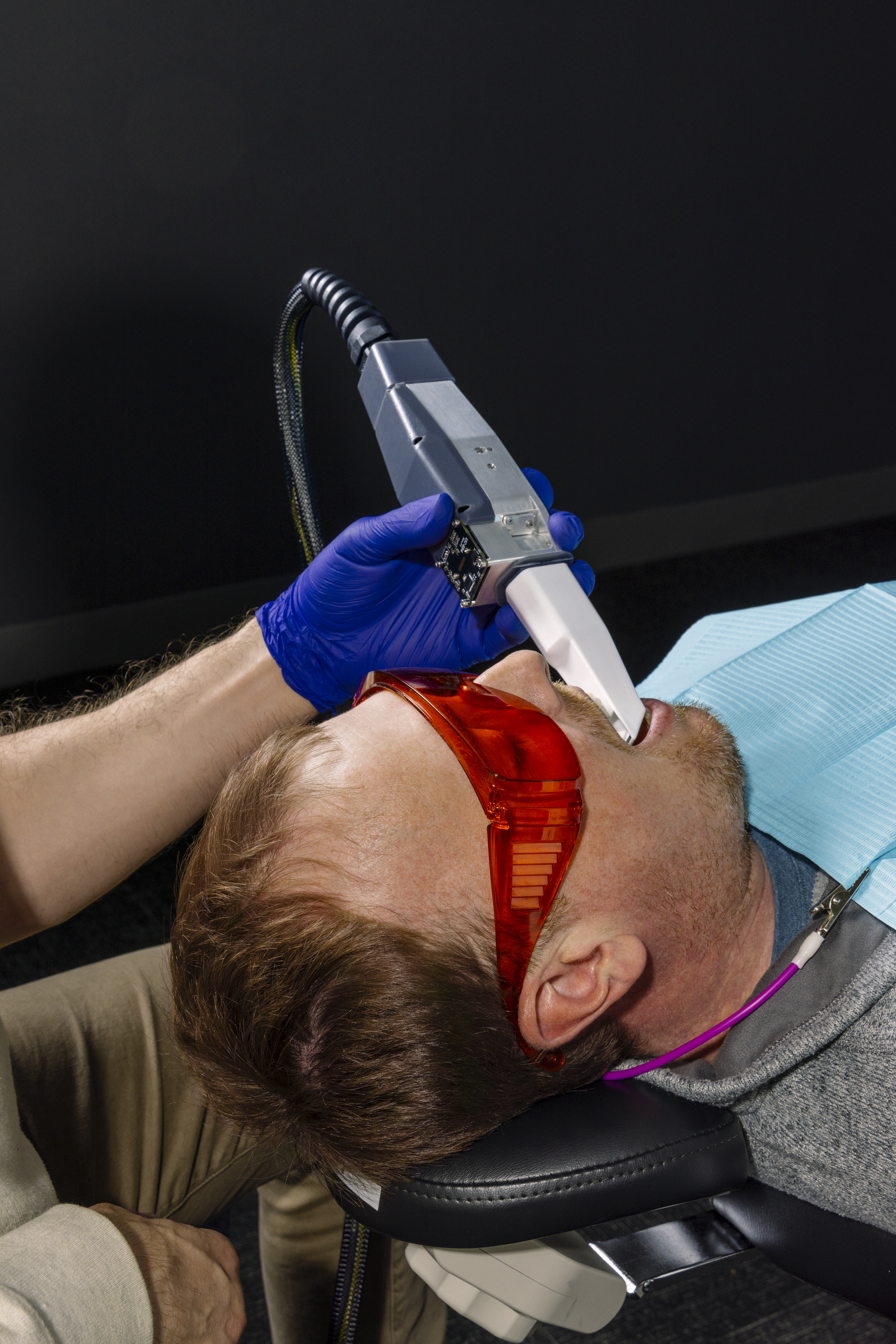Infrared light three times more effective than X-rays in detecting cavities
New intraoral scanner presents patients with easy-to-understand 3D models.
Infrared light is three times more effective in detecting cavities than X-rays – and is inherently safer for patients and practitioners – a study has shown.
Perceptive, the US company which recently undertook the world’s first robotic dental procedure, has completed an early feasibility study of the world’s first in-vivo 3D intraoral Optical Coherence Tomography (OCT) system, in collaboration with PDS Health.
“Imagine a cone beam computed tomography image made using light instead of X-rays,” said the company in a statement. “By utilising infrared light, it triples the sensitivity in detecting cavities compared with X-rays and enables the detection of cracks and demineralisation – all with intraoral scanner-like usability.
Our system provides a level of detail that gives both patients and dentists greater confidence in diagnoses.
Chris Ciriello
“This new imaging modality makes it easier for dentists to detect the reasons to recommend necessary treatments and gives patients the information and trust necessary to accept them.”
Research shows that a significant percentage of patients reject recommended treatments, which negatively impacts both their oral and systemic health, it added.
Many dental conditions are asymptomatic and only detectable with low-sensitivity X-rays, sometimes leading to misdiagnoses or conflicting diagnoses and a lack of patient trust. Perceptive said its OCT technology enables dentists to detect dental issues with confidence and improve patient trust by presenting patients with clear, easy-to-understand 3D models.
“With more than 90 per cent sensitivity to dental pathology – three times the accuracy of traditional X-rays and without the risks associated with ionising radiation – this system provides an unprecedented level of diagnostic detail in an easy to understand way,” said the company
During the study at PDS Health, Perceptive’s OCT system detected and identified issues when patients presented with symptoms such as sensitivity where traditional X-rays and exams could not determine the cause or location of the problem preoperatively. These causes include recurrent caries, voids and cracks extending into the dentin.
The advanced diagnostic capability, coupled with detailed 3D visuals, contributed to improved diagnosis of patients and increased treatment acceptance, as patients were better able to understand their condition and the need for intervention.
“During the study, it became clear that Perceptive’s imaging technology operates at a higher level than traditional intraoral scanners,” said Karim Zaklama, DDS, a general dentist and multi-practice owner supported by PDS Health, and a lead investigator in the study.
“I’ve used various scanners for years, but this one stood out- it wasn’t affected by moisture or condensation, and it allowed me to see into the deeper layers of the tooth with remarkable clarity.
“With this technology, I was able to diagnose issues in patients who presented with symptoms that couldn’t be identified using conventional methods. Both my patients and I felt reassured knowing that we could finally pinpoint the problems and address them before they worsened.”
Chris Ciriello, DDS, founder and chief executive of Perceptive, said: “Our system provides a level of detail that gives both patients and dentists greater confidence in diagnoses, making early detection easier, improving oral care and overall heath – all while eliminating ionising radiation from dental imaging.”
Perceptive is integrating artificial intelligence (AI) into its system to make the technology intuitive and easy to use. By providing interactive 3D visualisations and automated analyses, dentists can immediately leverage the imaging results without needing extensive training, said the company.
“This plug-and-play approach allows clinicians to focus more on patient care, increasing efficiency and improving treatment outcomes,” it said.


Comments are closed here.